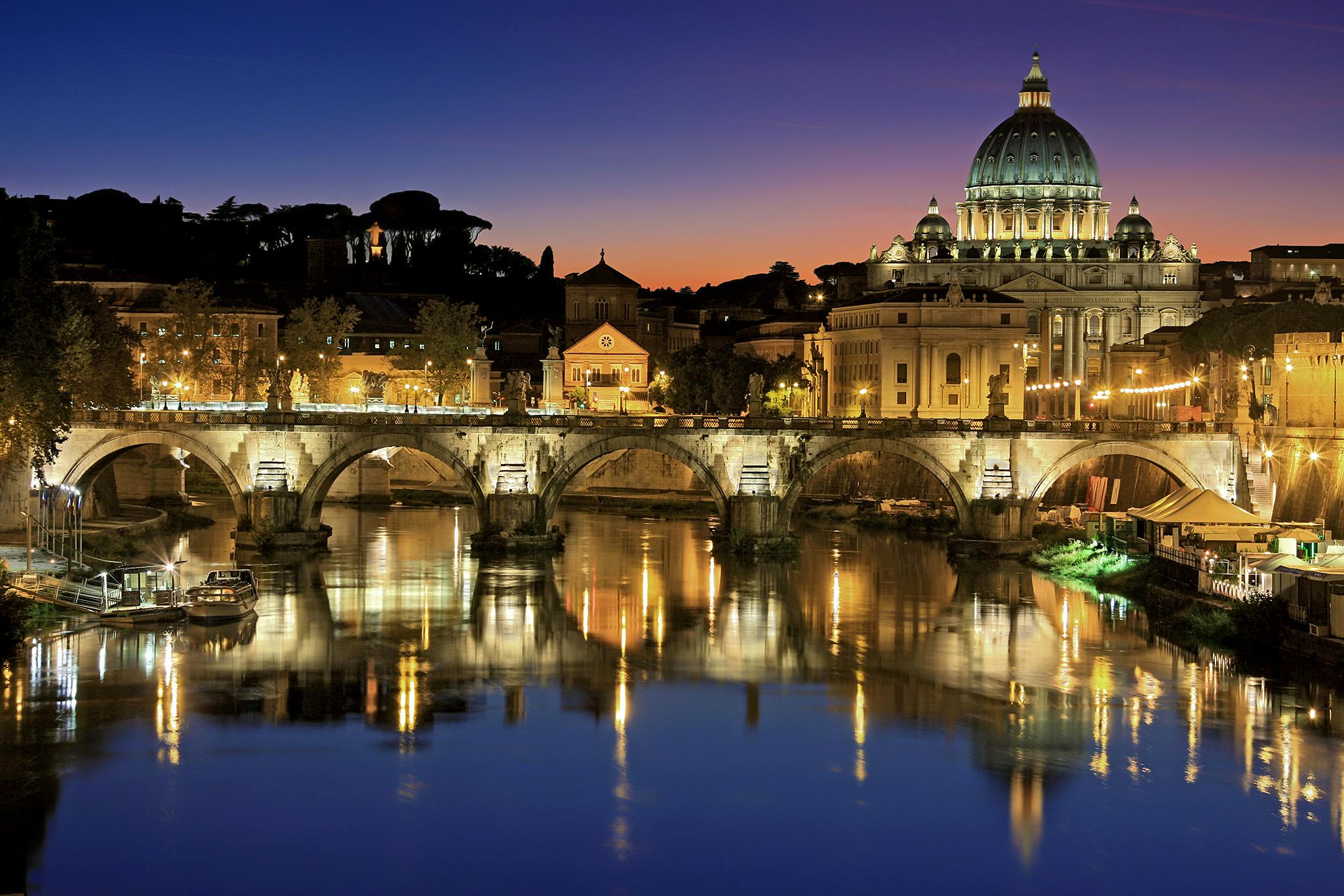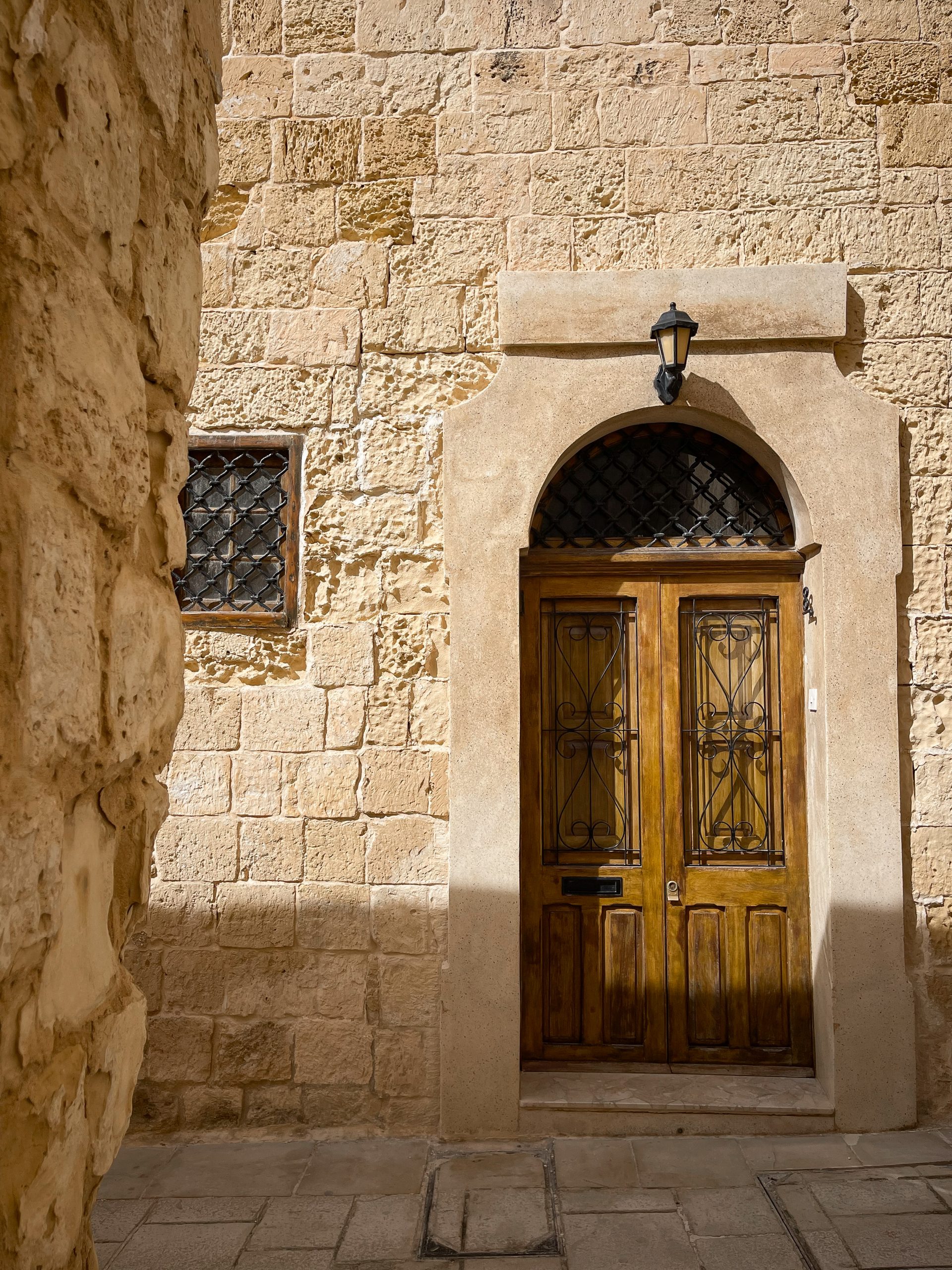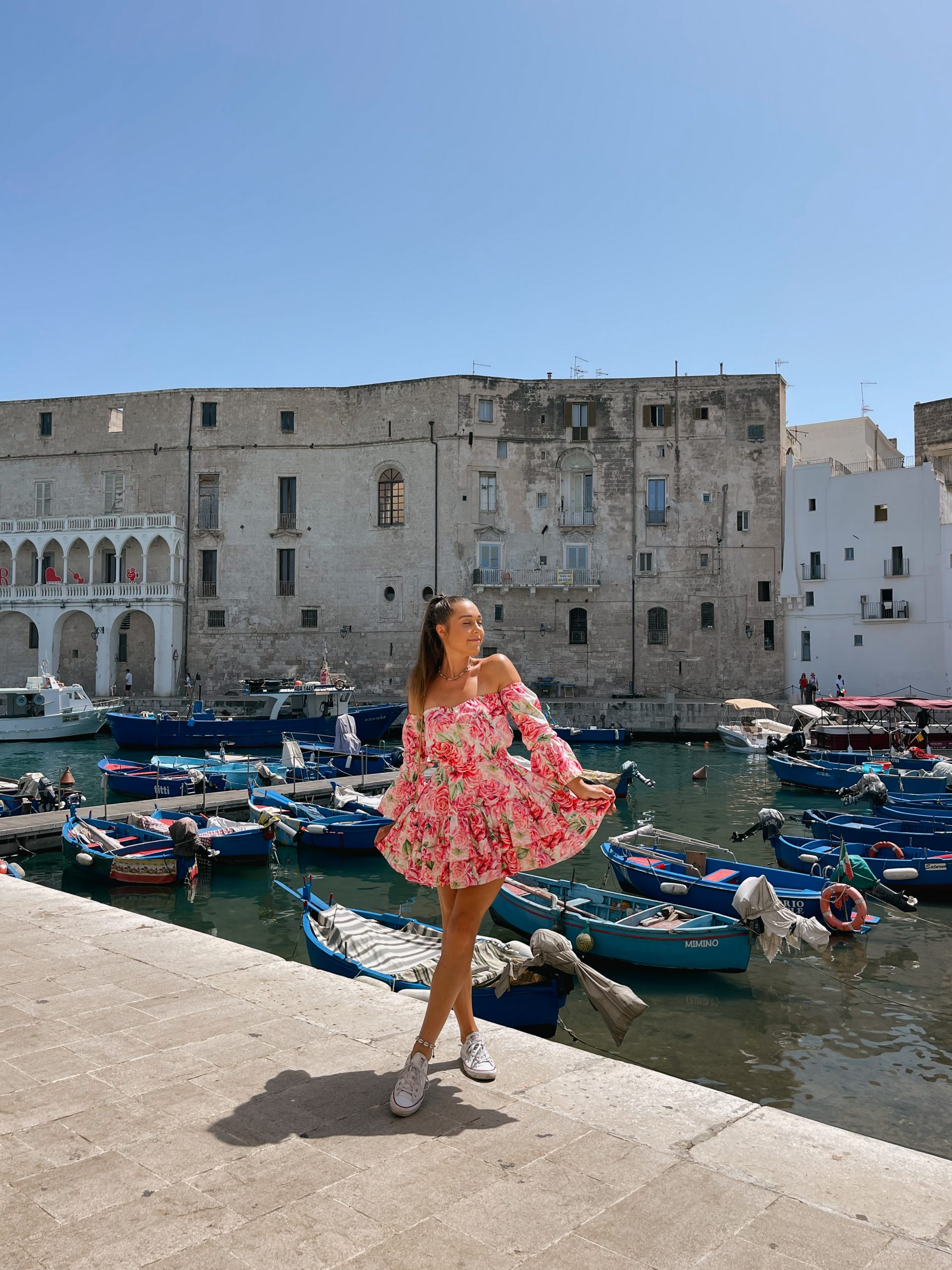No products in the cart.
Italy
Italy isn’t just a destination — it’s an experience. Loved by Europeans and travelers from all over the world, it’s the heart of summer dreams, rich culture, endless pasta, crystal clear waters, and those warm, lingering aperitivo nights you’ll never forget.
Every corner of this country feels like a scene from a film. Whether you’re here to wander through vineyards, sip espresso in hidden piazzas, or chase sunsets on the Amalfi Coast — Italy is a feeling you’ll want to return to over and over again.
It’s not just about ticking off landmarks — it’s about slowing down, noticing the beauty in small things, and letting each place tell its story. This page shares my favorite corners, personal tips, and visual inspiration to help you experience the magic of Italy — the way I did.
About Italy
Before you pack your bags, here’s what you should know — the quick, helpful details to make your trip smoother.
- Country: Italy
- Capital: Rome
- Currency: Euro (€)
- Language: Italian
- Time Zone: GMT+1 (winter), GMT+2 (summer)
- Plug Type: Type C, F, and L (European 230V)
- Payment: Cards are accepted in most places, but cash is useful in small towns and markets
- Transportation: Trains are great for long-distance travel; rent a car for countryside or coastal road trips
- Safety: Very safe, even for solo female travelers. As always, watch your belongings in busy areas
- Emergency Number: 112
- Internet: Fast and reliable in most areas; eSIMs and SIM cards are easy to get
- Digital Nomad Friendly: Yes — especially in larger cities and scenic countryside stays
- Best for: Foodies, culture lovers, solo travelers, couples, slow travelers, photography lovers
- Tipping: Not mandatory, but rounding up or leaving small change is appreciated
Italy is diverse, romantic, and endlessly inspiring — perfect for a short escape or a slow, dreamy stay.
Best Time to Visit Italy
Italy shines year-round — but your experience will depend on where you’re going and what kind of trip you’re planning.
Peak Tourist Seasons
- June to August – High summer means long days, warm nights, and packed cities. It’s lively but hot, especially in the south (Puglia, Calabria, Sicilia).
- Mid-December to early January – Christmas markets and festive charm, especially in the north. Also a busy time for ski resorts in the Alps.
Best Time to Visit
- April to early June & September to October – These shoulder seasons offer the perfect balance: warm weather, fewer crowds, and more relaxed prices. Ideal for cities, countryside, and coastlines.
Off-Season
- November & February – Quieter and more affordable, but many smaller towns (especially in the coastal south) slow down. Great for city breaks like Rome, Milan, or Florence without the crowds.
How to Get to Italy
Getting to Italy is easy, especially if you’re traveling from Europe or major international hubs. With dozens of international airports, high-speed trains, and ferry ports, arriving in Italy is often as beautiful as the destination itself.
By Air
Italy is served by many international airports, including:
- Rome Fiumicino (FCO) – the largest and busiest, ideal for central & southern Italy
- Milan Malpensa (MXP) – best for the north and Lake Como region
- Venice Marco Polo (VCE) – for exploring the Veneto and northeastern areas
- Naples (NAP), Florence (FLR), Bologna (BLQ), Pisa (PSA) – great for specific regional access
- Budget airlines also fly into smaller airports, making Italy super accessible from most European cities.
By Train
If you’re already in Europe, taking a train is scenic and stress-free. Direct trains run from France, Switzerland, Austria, and Germany into cities like Milan, Turin, and Venice.
By Car or Bus
Italy is connected to surrounding countries via highways and bus networks (like FlixBus or Itabus), offering a slower but often cheaper alternative.
By Ferry
Ferries arrive from countries like Croatia, Greece, and Albania into ports like Bari, Brindisi, or Ancona — ideal for those combining Italy with other Mediterranean spots.
Getting Around Italy
Italy is best explored slowly — with time to get lost in its towns, sip espresso in local cafés, and take the scenic route.
Trains
In the north and central parts of the country, Italy’s train system is reliable and well connected. High-speed trains (like Frecciarossa and Italo) make it easy to move between major cities like Rome, Florence, Milan, Venice, and Bologna in just a few hours — comfortable, scenic, and usually on time.
Car Rental
While trains cover the big cities, exploring southern Italy (especially regions like Campania, Basilicata, Puglia, Calabria, or Sicily) is a different story. The public transport infrastructure is more limited, and some places can be hard to reach without your own wheels. Renting a car gives you freedom to reach charming villages, beaches, and hidden countryside spots. Keep in mind, Italy drives on the right-hand side.
Public Transport
In cities, metros, buses, and trams are affordable and fairly easy to use. Local transit apps or Google Maps are useful for planning your routes. You can usually buy tickets at tabacchi shops or vending machines — just remember to validate your ticket before boarding.
Ferries & Boats
For exploring islands like Sicily, Sardinia, or hopping around Naples Bay to places like Capri, ferries are part of the journey — and the views make them worth every minute.
Tips for Getting Around
- Book high-speed train tickets in advance for the best prices
- In small towns, taxis are rare — it’s best to plan ahead
- If you’re planning a road trip in the south, give yourself extra time — things move slower there (in the best way)
Italy Travel Costs
Italy has something for every kind of traveler — whether you’re living la dolce vita on treating yourself to a multi-course dinner in a historic piazza. It all depends on how you want to experience it.
While cities like Rome, Venice, or Milan can be pricey, there are plenty of ways to travel Italy affordably — from grabbing pizza for a few euros to booking beautiful agriturismos in the countryside that feel like hidden gems. Some of Italy’s best moments won’t cost you a thing — golden hour walks through hilltop villages, quiet mornings by the sea, or a viewpoint you stumble on by accident. That’s the magic of Italy — beauty is everywhere, and often, it’s free.
Top Things to Do in Italy
Italy is a country made for slow exploration and unforgettable moments.
Highlights to Experience:
- Stroll through Rome’s ancient ruins and toss a coin in the Trevi Fountain
- Watch the sunrise over the hills of Tuscany
- Take a gondola ride through the canals of Venice
- Hike the colorful trails of Cinque Terre or along the Amalfi Coast
- Sip wine at a vineyard in Chianti or Piedmont
- Spend golden hour wandering the trulli-lined streets of Alberobello
- Visit the ruins of Pompeii and feel the weight of history
- Swim in the turquoise waters of Sardinia or the Tropea
- Indulge in aperitivo on a warm evening in Milan or Bologna
- Get lost in the romance of Verona
Italy shines in the little details — the clink of espresso cups, laundry swaying between balconies, live accordion music on a quiet square.
Best Areas to Stay in Italy
- For First-Time Visitors – Rome. Italy’s capital is perfect if you want a little bit of everything: ancient ruins, world-famous landmarks, lively neighborhoods, and authentic food. Great for a first-time immersion into Italian culture.
- For Romance & History – Florence or Venice. Ideal for art lovers, architecture admirers, and anyone looking to enjoy Italy’s romantic side. Walkable cities full of charm, elegance, and rich history.
- For Coastal Vibes & Dreamy Views – Amalfi Coast (Positano, Ravello, Amalfi). Iconic, stunning, and ideal for travelers seeking cliffside villages, crystal-clear waters, and unforgettable sunsets.
- For Nature & Slow Travel – Tuscany or Umbria. Peaceful countryside, olive groves, vineyards, and charming hilltop towns. Perfect for slower mornings, wine tastings, and authentic Italian hospitality.
- For Beaches & Southern Sun – Puglia, Calabria, or Sicily. Warm, laid-back, and full of local traditions. Beautiful coastline, hidden beaches, and incredible food at more affordable prices than the north.
- For Foodies – Bologna or Modena. The heart of Emilia-Romagna is a dream for food lovers — known for its rich cuisine, fresh pasta, and culinary traditions that go beyond pizza and pasta clichés.
- For Adventure & Scenic Drives – Dolomites or Lake Como. Dramatic mountain landscapes, alpine lakes, and cozy chalets. Best for hikers, skiers, or those looking for nature with a touch of luxury.
No matter where you go, Italy knows how to make you feel at home — just choose the vibe that fits your story best.
What to Eat & Drink in Italy
In Italy, food is more than just a meal — it’s how people connect, celebrate, and live. Every dish tells a story, and every region has its own flavors, shaped by tradition and love.
From fresh seafood by the coast to slow-cooked pasta in the mountains, Italian food is all about simplicity done beautifully. You don’t need a fancy restaurant to eat well here — the best meals often come from a tiny trattoria or a family-run osteria where everything feels made with heart.
Italians welcome you like family. They live fully, love deeply, and cook with soul. And once you’ve shared a table here, you’ll carry a little piece of that warmth with you forever. Here’s a tiny bit of what Italy offers:
Traditional Dishes to Try
- Pasta alla Carbonara – A Roman favorite made with egg, pecorino cheese, guanciale, and black pepper (p.s. cream is never part of the recipe).
- Linguine allo Scoglio – Pasta with mixed seafood like clams, mussels, and shrimp, often found in coastal towns.
- Pizza Napoletana – The original wood-fired pizza from Naples, with soft, chewy dough and minimal toppings.
- Parmigiana di Melanzane – Layers of fried eggplant slices, tomato sauce, and cheese, baked all together (layered like lasagna).
- Fiori di Zucchini – Fried zucchini flowers, often stuffed with ricotta or mozzarella and anchovies.
- Arancini – Crispy rice balls with a warm, savory filling — popular in Sicily.
- Caprese Salad – A simple mix of mozzarella, tomato, and basil, finished with olive oil and salt.
- Bistecca alla Fiorentina – A thick T-bone steak from Tuscany, served rare and made to share.
Sweet Treats
- Cannoli – Crisp pastry shells filled with sweet ricotta cream, often with pistachio or chocolate chips — a Sicilian specialty.
- Gelato – Creamier and denser than ice cream, with bold, natural flavors. Look for artisanal gelaterias.
- Tiramisu – Soft layers of espresso-soaked ladyfingers and mascarpone cream, dusted with cocoa.
- Cornetto – Italy’s version of the croissant, often filled with jam, cream, or chocolate — best enjoyed with morning coffee.
- Baba al Rum – A small sponge cake soaked in rum syrup, especially found in Naples.
- Cantucci e Vin Santo – Almond cookies served with sweet Tuscan dessert wine for dipping.
- Bombolone – Fluffy, cream-filled doughnuts you might spot in southern bakeries.
Local Drinks & Wines
- Espresso – Quick, strong, and best enjoyed standing at the bar. Italians don’t linger over coffee.
- Aperol Spritz – A classic pre-dinner drink with a mix of Aperol, prosecco, and soda water.
- Limoncello – Sweet lemon liqueur served cold after meals, especially on the Amalfi Coast.
- Prosecco (Veneto) – Light, bubbly, and refreshing. Perfect for aperitivo hour.
- Chianti (Tuscany) – Dry and earthy, ideal with red sauces or grilled meats.
- Barolo (Piedmont) – Deep, bold red wine known as the “king of wines.”
- Nero d’Avola (Sicily) – Rich and full-bodied, pairs well with hearty local dishes.
- Franciacorta (Lombardy) – Italy’s elegant alternative to Champagne.
Helpful Travel Notes
Here are a few things to keep in mind before your Italian adventure — to help you feel more prepared, relaxed, and ready to enjoy your vacation.
Internet & Connectivity
Wi-Fi is available in most accommodations, cafés, and restaurants. For longer trips, getting a n eSIM or a local SIM card (TIM, Vodafone, or WindTre) is a good idea — coverage is reliable across cities and towns.
Language
Italian is the official language, and while English is spoken in major tourist spots, don’t expect everyone to speak it — especially in smaller towns or in the south. Even younger people sometimes don’t feel comfortable speaking English, so learning a few basic Italian phrases will go a long way and locals truly appreciate the effort.
Helpful Words to Know:
- Ciao – Hello / Bye
- Grazie – Thank you
- Per favore – Please
- Scusa – Excuse me / Sorry
- Quanto costa? – How much is it?
- Dov’è…? – Where is…?
- Il conto, per favore – The bill, please
- Non parlo italiano – I don’t speak Italian
- Parli inglese? – Do you speak English?
Local Etiquette
Italians are warm, expressive, and welcoming — but also value politeness and respect. Always greet people when you enter a shop or restaurant. Dress appropriately, especially when visiting churches. And remember, meals are meant to be savored — not rushed. Tipping isn’t required (it’s not even common), but rounding up the bill or leaving a few coins is always appreciated.
Driving & Parking Tips
Driving in Italian cities can be chaotic, especially with the many ZTL zones (limited traffic areas) in place — which you can’t enter without permission (if you do, wait for a very fat fine). In the countryside driving is more relaxed, but in southern regions — it’s a complete disaster (especially in Naples). Parking can be a challenge in many places in Italy, so make sure to book a hotel with a private parking. Also, DO NOT leave anything in a car!
Drinking Water
Tap water is technically safe to drink across the country, but in many areas — especially in the south — locals tend to drink bottled water due to taste or habit. In cities like Rome, public fountains (nasoni) offer clean, drinkable water and are great for refilling your bottle on the go.
Health & Medical Info
Pharmacies (farmacia) are easy to find and well-stocked — look for the green cross sign. EU travelers can use their European Health Insurance Card (EHIC) for public care access. Non-EU travelers should carry travel insurance that covers health needs.
Safety & Travel Tips
Italy is generally safe for travelers, including solo female travelers, but like anywhere, be careful in crowded areas (Rome, Milan, Naples, Sicily). Here are a few mindful tips to keep in mind:
Watch your belongings
Pickpocketing can happen in busy areas like train stations, public transport, and tourist hotspots (especially in Rome, Naples, and Milan). Keep your bag zipped, wear your backpack in front in crowded places, and don’t leave your phone or wallet on café tables.
Road awareness
Traffic in Italian cities can feel chaotic — scooters, tiny alleys, limited driving zones, and fast-paced drivers. If you rent a car, drive carefully and always double-check signage, especially for restricted areas (you can get fined even without knowing it).
Public transport
Validate your bus or train ticket before boarding (look for small machines at stations and on buses). Not doing so may result in a fine — even if you have a valid ticket!
Do’s and Don’ts
✔️ Try regional dishes — go beyond pizza and pasta. Every region has its own specialties, and food is a big part of the culture.
✔️ Learn a few Italian phrases — locals will love you for it (even just a “grazie” goes a long way).
✔️ Take your time at dinner — meals are meant to be savored slowly. It’s about connection, conversation, and then the food.
✖️ Don’t expect restaurants to serve dinner before 7:30–8:00 PM — Italians eat late.
✖️ Don’t walk around eating or drinking coffee — especially in historical areas. It’s considered disrespectful.
✖️ Don’t order cappuccino after 11am — unless you want to be stared at like an alien (really).
✖️ Don’t ask for cheese on seafood pasta — just… don’t. Trust the chef.
Italy is more than a destination — it’s a feeling. It’s the warmth of the morning sun on a piazza. The clink of wine glasses over slow dinners. The smell of lemons or a seaside espresso shared with strangers who feel like old friends.
Italians have mastered the art of living — not through luxury, but through simplicity. They find beauty in everyday rituals: a chat with the barista, fresh flowers on the market stall, an evening stroll just because the light is too beautiful to miss. And once you’ve experienced it, it stays with you.
Whether it’s your first visit or your fifth, Italy has a way of pulling you in, teaching you to slow down, breathe deeper, and truly feel life. Let yourself get lost. Let yourself fall in love with the moments. Italy isn’t just a place to see — it’s a place to live.



